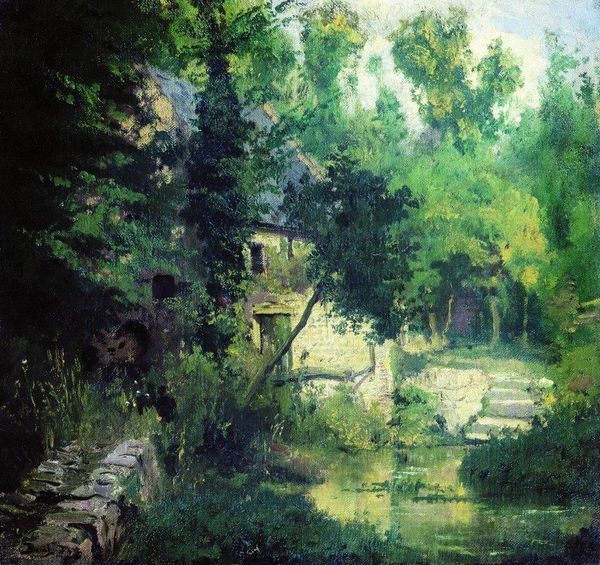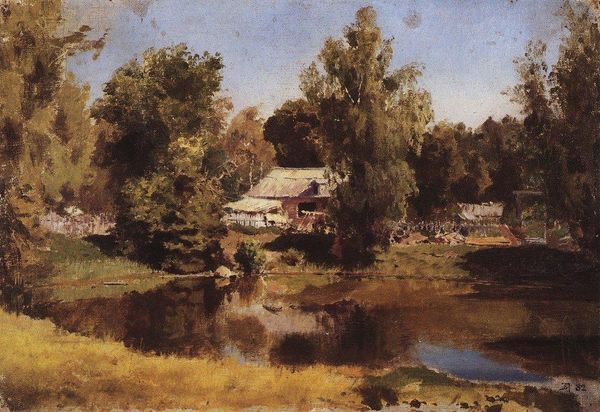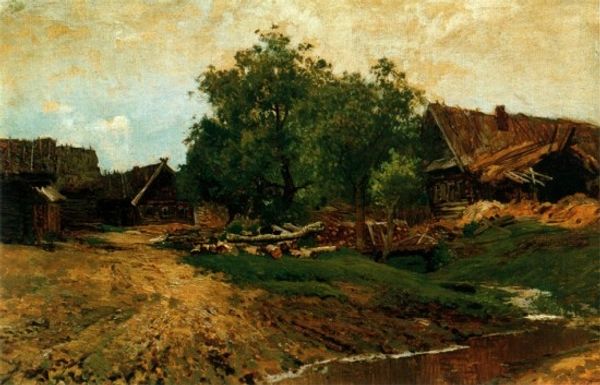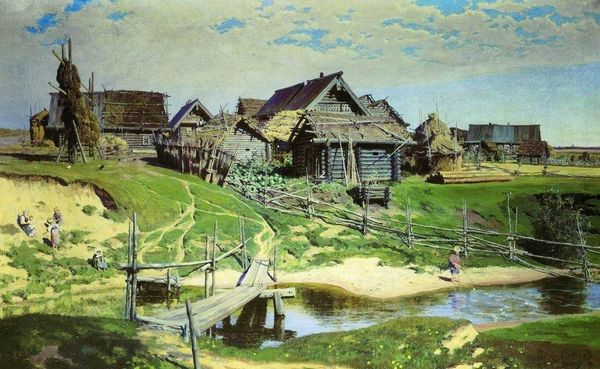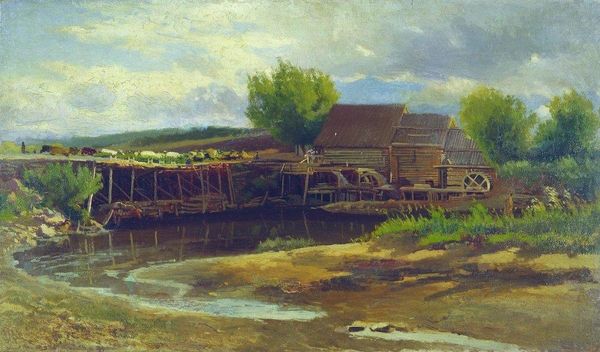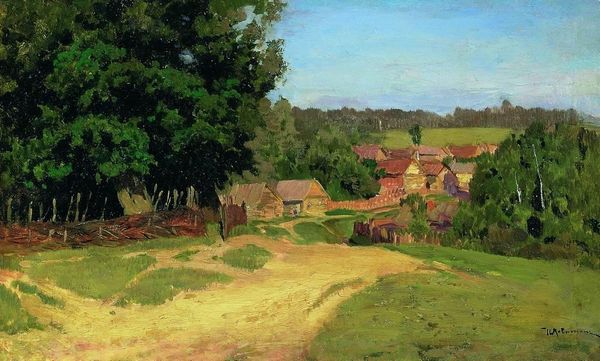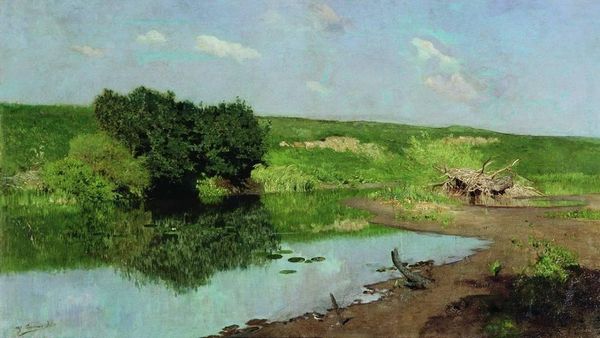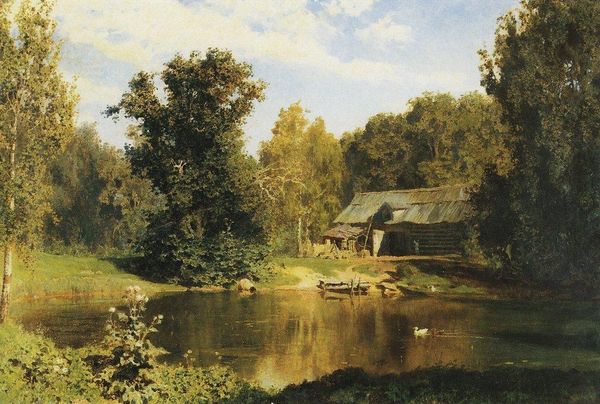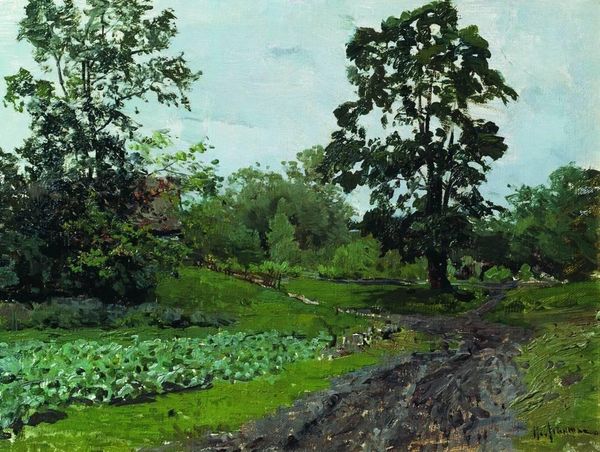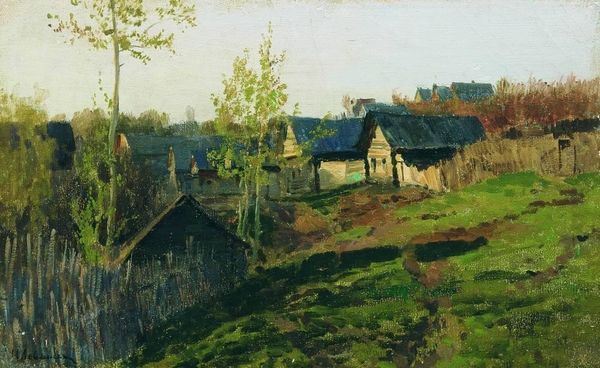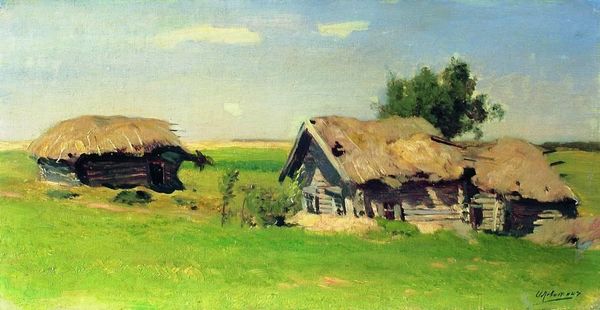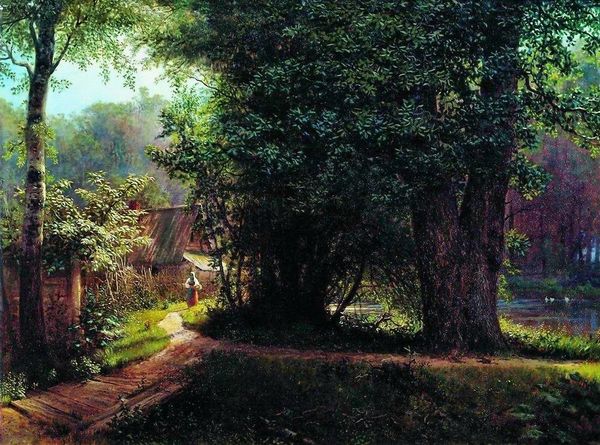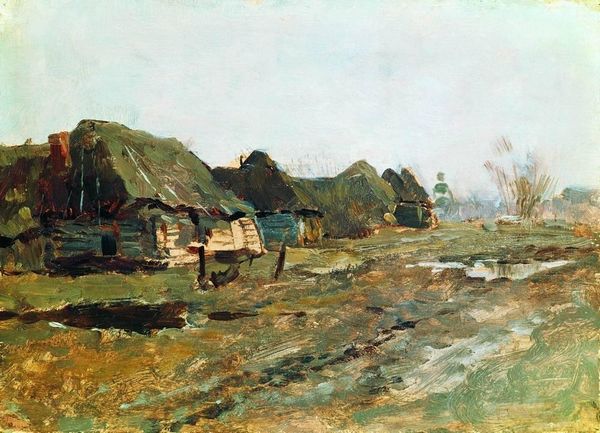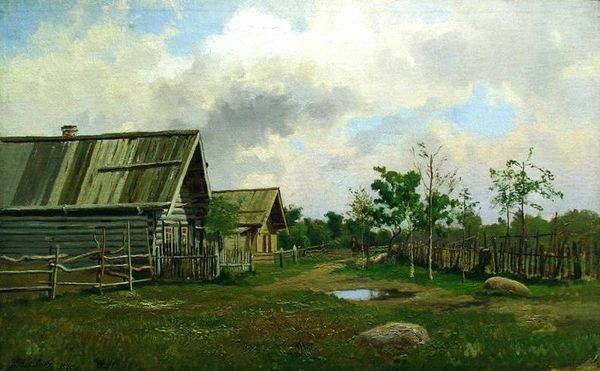
Copyright: Public domain
Vasily Polenov painted Turgenevo Village in Russia, but the exact date of its making is not known. This landscape presents an idyllic view of rural life that can be understood in the context of Russian social and intellectual history. In the latter half of the 19th century, the rise of the “peredvizhniki,” or “Wanderers,” art movement marked a shift towards social realism and a focus on the lives of ordinary people, particularly peasants. This movement emerged as a critique of the established academic art world, especially the Imperial Academy of Arts. Polenov was associated with this movement, even if he also kept close ties with the Academy. "Turgenevo Village" captures a sense of nostalgia for traditional peasant life, with its rustic architecture and natural setting. The image participates in the debates about the role of the peasantry in Russian society and the impact of industrialization on rural communities. To understand Polenov's work better, we can consult historical documents, literary sources, and critical essays on the social and artistic movements of his time. The meaning of the work is contingent on the social context in which it was made and viewed.
Comments
No comments
Be the first to comment and join the conversation on the ultimate creative platform.
